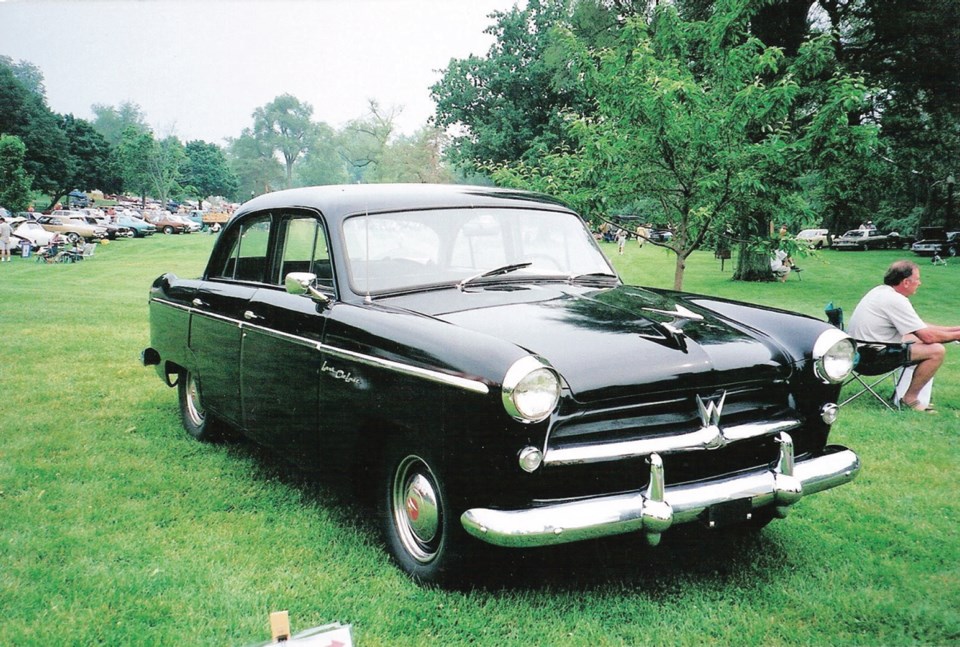Although Willys-Overland became famous for building Jeeps during the Second World War (Ford also built many under a Willys licence), it built cars far longer than it did Jeeps.
The Willys-Overland name went back to 1908, when Willys dealer John North Willys rescued the Overland Co. of Indianapolis and moved it to Toledo, Ohio. He renamed it the Willys-Overland Co., and from 1912 to 1919 W-O sales were second only to Ford’s famous Model T.
A brush with financial disaster in the early 1920s brought in management expert Walter P. Chrysler to revive the company. Once Chrysler accomplished a turnaround, it was returned to John Willys and again flourished producing Overland, Whippet and sleeve-valve-engined Willys-Knight cars.
The company survived the Depression, and during the Second World War W-O got back on its feet by landing the big military contract for its Jeep, a 1/4-ton, four-wheel-drive military utility vehicle.
In 1945, Willys-Overland decided its pre-war cars were unsuitable for the postwar market, so it developed a civilian version of the Jeep called the CJ (Civilian Jeep). There was also a Jeep truck, all-steel Jeep station wagon and sporty four-passenger Jeepster convertible, a rare American industry phaeton model.
Willys decided to resume building cars in 1952 with a vehicle that was smaller than the standard Ford, Chevrolet and Plymouth. The trail had been blazed by Nash Motor Co.’s attractive little 2,540-millimetre- wheelbase Nash Rambler in 1950 and Kaiser-Frazer’s small 1951 Henry J.
The new Willys car was based on a concept proposed to Willys-Overland chairman Ward Canaday in 1948, on a suggestion from independent engineering consultant Clyde Paton. Although assisted by ex-Pierce Arrow and Packard stylist Phil Wright, Paton was apparently largely responsible for the new car’s design.
W-O chose unit construction, then relatively new in American cars, for the Aero-Willys. Its modern and attractive body’s fender line ran level front to rear with stylish little vestigial fins housing the taillights. The grille was a single, chromed horizontal bar adorned by a large W.
With a 2,743-mm wheelbase and overall length of 4,572 mm, Mechanix Illustrated’s colourful car tester Tom McCahill said the Aero-Willys “tucks itself into a parking space as easily as a short beer sliding down a barfly’s throat.”
Weight was just less than 1,179 kilograms, and it came initially as a two-door; a four-door soon followed.
There were four series of the 1952 Aero Willys: Aero-Lark, Aero-Wing, Aero-Ace and Aero-Eagle. Power came from a 2.6-litre (161 cu. in.) six-cylinder engine. The Lark’s had side valves and developed 75 horsepower. The others had the same engine with an F-head conversion (inlet valves in the head, exhausts in the block), designed by W-O engineer Barney Roos. It produced 90 horsepower. An F-head 134 cu. in. (2.2-litre) four became available in the 1953 Lark as an economy model, but the six was always the market favourite.
Performance with the F-head six was fairly competitive with similar cars. Road & Track reported zero to 100 km/h in 22.5 seconds for an overdrive-equipped Aero-Wing. Top speed averaged 130 km/h. Competitor Henry J with an 80-horsepower six and overdrive did 20 seconds to 100 with a top speed of 129 km/h.
While the Aero-Willys had acceptable style, performance and economy, it suffered from one serious disadvantage: price. Willys-Overland priced it more than $2,200, $200 to $300 above the larger Fords and Chevrolets. Most buyers saw more value in established larger cars.
McCahill was moderately impressed with the Aero-Willys, but pulled no punches about the price. In his June 1952 test, the ever forthright McCahill said Willys-Overland should be awarded the “Greaseball Oscar for the year for introducing the most overpriced car in America.”
First year Aero sales were 31,363, climbing to 42,244 in 1953, the year a GM Hydra-Matic transmission became available. It was also the year Willys-Overland was acquired by Kaiser Industries and renamed Kaiser-Willys.
In spite of the availability of a 3.7-litre (226 cu. in.) 115-horsepower side-valve Kaiser six for the Ace and Eagle, creating what many considered the best Aero yet, 1954 sales slid to 11,865.
Even with the addition of a smart, two-door hardtop “Bermuda” model, 1955 sales of just over 5,100 convinced Kaiser to withdraw it from the North American market at mid-year.
The operation was moved to Brazil, where the Aero Willys were marketed as luxury cars and would live for an amazing 13 more years.
Another attempt to launch a new American compact car had failed. A high price, strong competition from the Big Three (General Motors, Ford and Chrysler) and perhaps concern about the company’s viability had hurt it from the beginning.



